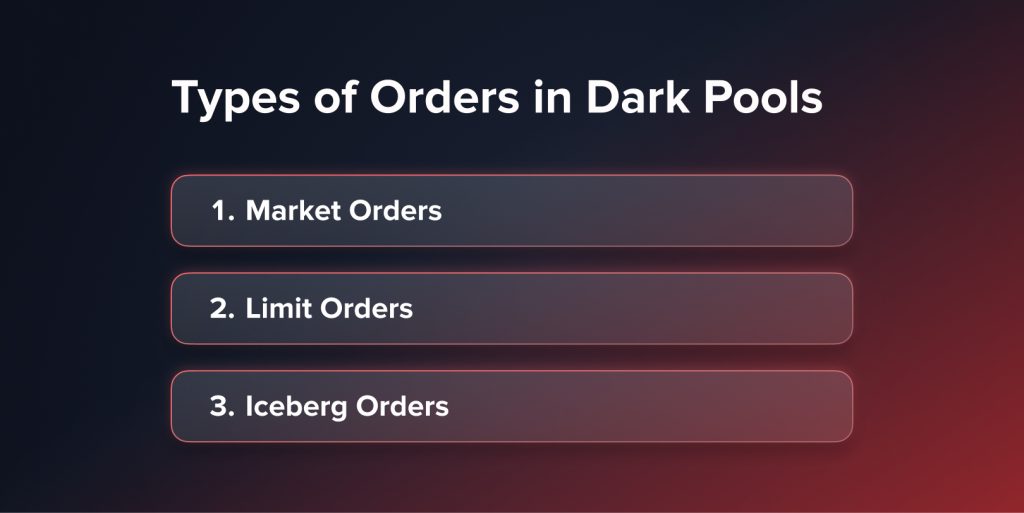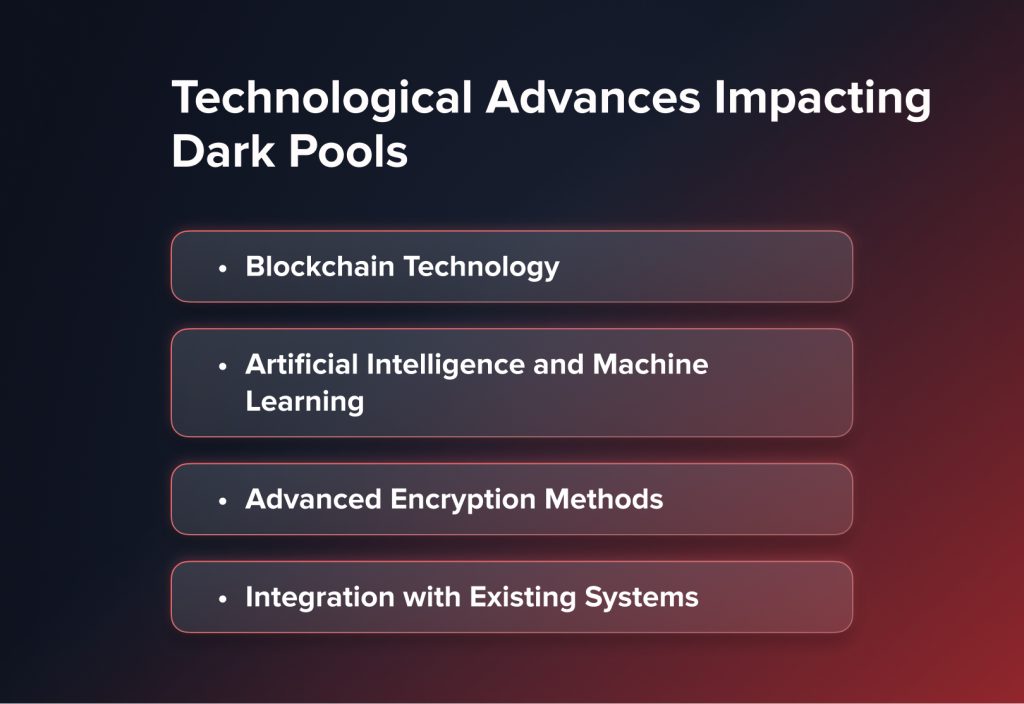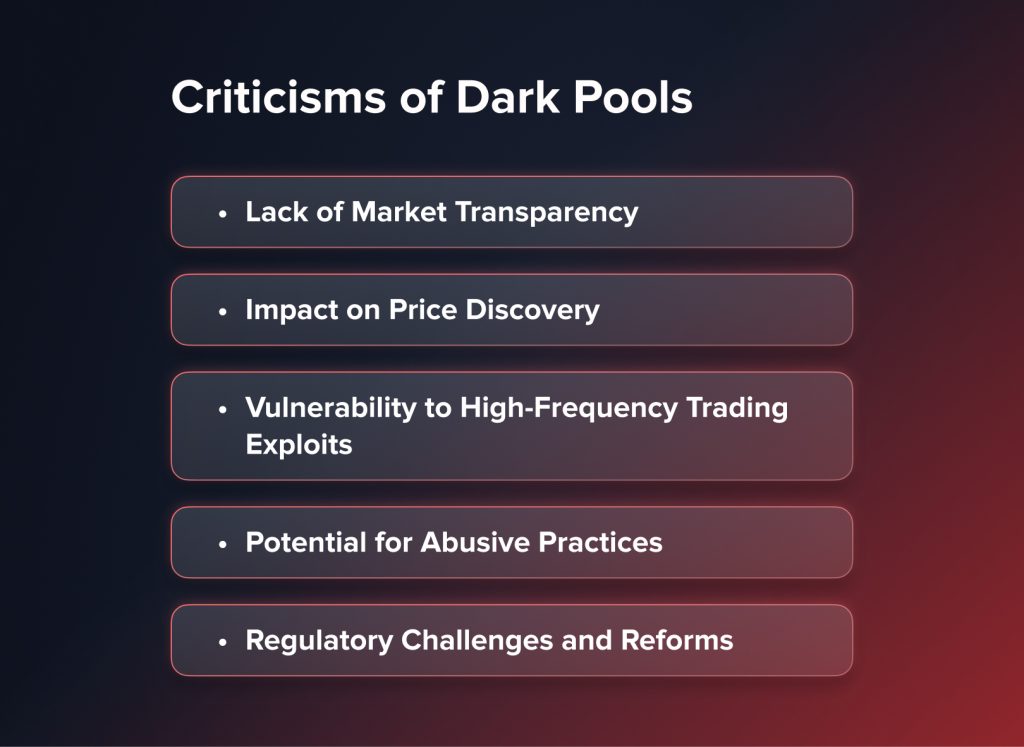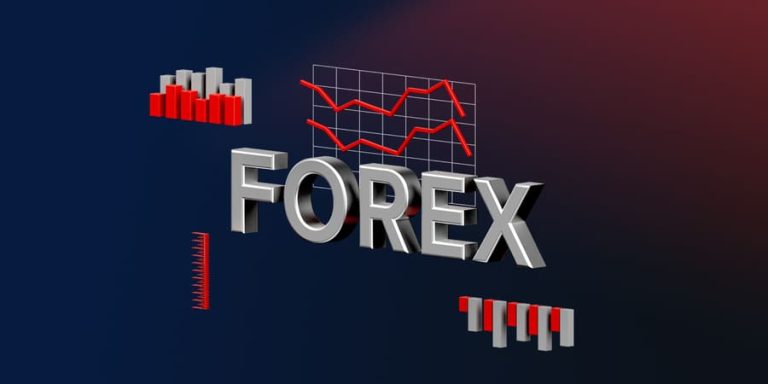
Entendiendo los Dark Pools: Su Función, Críticas y Ejemplos
Contenidos
Los dark pools son foros o bolsas financieras privadas utilizadas principalmente por inversores institucionales para ejecutar transacciones sustanciales sin exposición pública inmediata. Si bien protegen a los grandes operadores del impacto del mercado antes de la ejecución de la operación, han generado inquietudes respecto a la transparencia y equidad del mercado. Este artículo analiza los procesos de los dark pools, analiza sus objeciones y presenta ejemplos que demuestran su función e importancia en los mercados financieros actuales.
Funcionalidad de los Dark Pools
Los inversores institucionales, como los fondos de inversión, los fondos de pensiones y las grandes gestoras de activos, son los principales beneficiarios de los dark pools, que ofrecen un entorno de negociación discreto. Les permiten ejecutar transacciones importantes sin ser vistos por el público. Esta sección profundizará en los matices operativos de los dark pools y su importancia estratégica en el trading moderno.
Mecánica operacional
Básicamente, un dark pool permite ejecutar órdenes de compra y venta sin divulgación pública inmediata del mercado. Esto se logra mediante un mecanismo que no muestra las ofertas y demandas antes de que se ejecuten las transacciones. A diferencia de las bolsas públicas, donde todos los participantes del mercado pueden observar cada transacción y fluctuación de precios, los dark pools mantienen un velo de secretismo en torno a la actividad comercial.
Las órdenes realizadas en dark pools suelen casarse internamente, lo que significa que el sistema de negociación empareja automáticamente las órdenes de compra y venta a precios acordados según las condiciones actuales del mercado, sin intervención manual. Si bien no son visibles antes de la operación, estos precios suelen estar vinculados a los precios disponibles en las bolsas públicas, que suelen calcularse como el punto medio entre los mejores precios de compra y venta disponibles en dichas bolsas. Esta práctica garantiza que las operaciones se ejecuten a tasas justas y competitivas sin contribuir a las fluctuaciones inmediatas de precios en el mercado en general.
Ventajas estratégicas para los comerciantes institucionales
La funcionalidad de los dark pools ofrece varias ventajas estratégicas a los operadores institucionales. Principalmente, el anonimato que ofrecen ayuda a evitar que las órdenes grandes influyan negativamente en los precios del mercado. Por ejemplo, si un inversor institucional necesita vender muchas acciones, hacerlo en una bolsa pública podría indicar al mercado que estas podrían estar sobrevaloradas o que el inversor prevé una caída de su precio, precipitando la caída que el vendedor busca evitar. Al ocultar la orden hasta su ejecución, los dark pools mitigan dicho impacto en el mercado, ayudando a mantener la estabilidad de precios y el valor de los activos durante el período de la transacción.
Además, los dark pools ayudan a gestionar el riesgo de mercado asociado con el retraso en la ejecución de operaciones de gran volumen. En un mercado dinámico, los precios pueden fluctuar significativamente incluso en el breve tiempo que se tarda en ejecutar una orden grande en una bolsa pública. Al agregar y combinar órdenes de tamaño similar de forma privada, los dark pools pueden fijar precios aislados de las fluctuaciones del mercado público durante el proceso de ejecución de la orden.
Tipos de órdenes en los Dark Pools
Al permitir una amplia gama de tipos de órdenes, incluidas las de mercado, límite e iceberg, los dark pools permiten una amplia gama de estrategias comerciales :

- Órdenes de mercado se ejecutan al mejor precio disponible dentro del dark pool sin exposición al mercado más amplio.
- Órdenes limitadas Especifican un precio máximo o mínimo al que el operador está dispuesto a comprar o vender. Ofrecen control sobre los precios de ejecución, pero no garantizan su ejecución.
- Órdenes de Iceberg implican la visualización de sólo una pequeña parte de un pedido grande, y el resto queda oculto para evitar reacciones del mercado a gran escala.
Avances tecnológicos que impactan en los dark pools
Las mejoras tecnológicas han contribuido a mejorar la utilidad, la seguridad y la eficiencia de los dark pools. Estos están evolucionando para satisfacer las demandas de los mercados financieros actuales mediante la incorporación de tecnología de vanguardia como blockchain, inteligencia artificial (IA), cifrado mejorado e integración fluida de sistemas.

Tecnología Blockchain
Un uso particularmente prometedor de la tecnología blockchain es mejorar la transparencia de los dark pools, preservando al mismo tiempo el anonimato requerido. Blockchain permite registrar transacciones de forma segura sin revelar información específica de forma anticipada mediante un sistema de registro distribuido e inalterable. Este enfoque garantiza la trazabilidad y auditabilidad de todas las transacciones, sin comprometer la privacidad de la transacción hasta su finalización. Esta transparencia es crucial no solo para el cumplimiento normativo, sino también para mantener la confianza entre los participantes del mercado. La adopción de blockchain en los dark pools podría revolucionar la gestión de datos comerciales, haciendo prácticamente imposible su alteración o falsificación sin ser detectados.
Inteligencia artificial y aprendizaje automático
La IA y el aprendizaje automático están transformando la gestión y ejecución de operaciones en los dark pools, al permitir un análisis de datos y procesos de toma de decisiones más sofisticados. Estas tecnologías pueden procesar y analizar grandes conjuntos de datos con mayor rapidez que los métodos tradicionales, identificando tendencias y patrones que podrían indicar oportunidades óptimas de trading o posibles manipulaciones del mercado. Los sistemas de IA pueden, por ejemplo, combinar dinámicamente grandes órdenes de compra y venta con un impacto mínimo en el mercado, mejorando así la eficiencia y el anonimato de transacciones significativas. Además, la monitorización en tiempo real de las operaciones de trading, gracias a la inteligencia artificial, ayuda a identificar y detener métodos de trading predatorios o fraudulentos, mejorando así la integridad y la equidad del entorno de trading en los dark pools.
Métodos de cifrado avanzados
Es fundamental contar con medidas de seguridad robustas, dada la gran importancia de las transacciones en dark pools. Las tecnologías de cifrado avanzadas son cruciales para garantizar la seguridad de la conexión y el intercambio de datos entre los operadores y los dark pools. El uso del cifrado protege todos los datos enviados, incluyendo las órdenes de trading y los nombres de los participantes, contra accesos no deseados. Esta característica de seguridad es crucial para proteger la información sensible y preservar la confidencialidad, esencial para el atractivo de los dark pools.
You may also like

Integración con sistemas existentes
La integración tecnológica garantiza que los dark pools funcionen en armonía con el resto del ecosistema financiero. Las tecnologías de interfaz avanzadas y las API permiten que los dark pools se integren fácilmente con las plataformas de negociación y las bolsas públicas actuales. Esta conexión es crucial para garantizar que las actividades de los dark pools se ajusten a las circunstancias del mercado en tiempo real y a los requisitos regulatorios. También ayuda a mantener precios precisos al consultar datos en tiempo real de las bolsas públicas, evitando así discrepancias que podrían afectar la estabilidad del mercado.
La continua evolución tecnológica de los dark pools está estableciendo nuevos estándares de eficiencia operativa, seguridad y cumplimiento normativo. Al aprovechar la tecnología blockchain para una mayor transparencia, utilizar IA para optimizar la conciliación de operaciones y la detección de fraudes, garantizar una seguridad de primer nivel con cifrado avanzado e integrarse fluidamente con los sistemas financieros existentes, los dark pools están mejor preparados para satisfacer las sofisticadas necesidades de los inversores institucionales modernos. Estas mejoras tecnológicas refuerzan la funcionalidad de los dark pools y ayudan a alinear sus operaciones con el cambiante panorama regulatorio y los estándares éticos que exigen los participantes del mercado.
Críticas a Dark Pools
Si bien son beneficiosos para ciertos participantes del mercado, los dark pools se enfrentan a un escrutinio y críticas considerables por diversas razones, en particular en lo que respecta a la equidad y la transparencia del mercado. Esta sección ampliada explora la profundidad de estas críticas y sus implicaciones para los mercados financieros en general.

Falta de transparencia del mercado
La falta de transparencia de los dark pools es una de sus principales desventajas. Estos operan sin revelar información comercial hasta después de que se completan las transacciones, a diferencia de las bolsas públicas, donde todos los detalles de las transacciones son visibles para todos los participantes. Para una gran parte del mercado, incluidos los inversores individuales sin acceso a estas plataformas de negociación secretas, esta falta de divulgación puede ocultar la actividad real del mercado. Los críticos argumentan que esto podría generar un campo de juego desigual, ya que solo ciertos participantes tienen una perspectiva completa de la dinámica del mercado, lo que podría generar ineficiencias y una sensación de injusticia.
Impacto en el descubrimiento de precios
Los dark pools también pueden afectar el proceso de formación de precios. Las transacciones en dark pools no contribuyen a la creación de precios en tiempo real, ya que permanecen ocultas hasta su ejecución. Cuando muchas transacciones en el mercado se realizan fuera de bolsas públicas, esto puede causar problemas, ya que puede generar una diferencia entre los precios del mercado público y los valores reales. Esta diferencia podría provocar que el reflejo de las circunstancias reales del mercado sea inferior al de los precios observables públicamente, lo que influye en las decisiones comerciales de todos los participantes del mercado.
Vulnerabilidad a exploits de trading de alta frecuencia
Las empresas de trading de alta frecuencia (HFT) suelen utilizar algoritmos sofisticados para analizar datos de mercado y ejecutar operaciones a velocidades increíblemente rápidas. Las estrategias de HFT pueden explotar la opacidad de los dark pools de diversas maneras. Por ejemplo, si los algoritmos de HFT pueden inferir que es probable que se produzca una gran transacción en un dark pool, pueden operar antes de estas transacciones en los mercados públicos para capitalizar las fluctuaciones de precios previstas. Este tipo de actividad, a menudo denominada trading predatorio, apalancamientos la asimetría de información creada por los dark pools puede generar ganancias significativas para las empresas de HFT a expensas de otros participantes del mercado.
You may also like

Potencial de prácticas abusivas
Las posibles actividades abusivas en los dark pools han suscitado cuestionamientos por parte de la SEC y otras agencias reguladoras. La técnica de adelantarse a la operación (front-running) consiste en que un bróker utilice información sobre una próxima transacción importante para ejecutar operaciones con antelación, beneficiándose así de las fluctuaciones de precios posteriores. Si bien es ilegal, el carácter secreto de los dark pools puede facilitar el ocultamiento de estas actividades, lo que plantea desafíos a los reguladores.
Desafíos y reformas regulatorias
A medida que las autoridades intentan reducir los posibles abusos y aumentar la transparencia, el entorno de los dark pools ha ido cambiando. Por ejemplo, la SEC ha promulgado regulaciones que exigen una divulgación más exhaustiva de las operaciones de los dark pools y su naturaleza comercial. A pesar de estas iniciativas, la dificultad sigue radicando en lograr un equilibrio entre el anonimato que exigen los grandes inversores institucionales y la necesidad de justicia y transparencia del mercado.
Ejemplos de Dark Pools
Los dark pools varían en cuanto a propiedad y estructuras operativas, y cada uno atiende a distintos segmentos de los mercados financieros, ofreciendo distintos niveles de privacidad y servicio. Esta sección profundiza en ejemplos prácticos de operaciones de dark pools, ilustrando su impacto en la dinámica del mercado y el enfoque regulatorio.
Estructuras operativas y ejemplos
Los dark pools, propiedad de importantes instituciones financieras y propiedad de corredores como Sigma X de Goldman Sachs y MS Pool de Morgan Stanley, facilitan las operaciones de sus clientes aprovechando los datos de precios del mercado. Estas plataformas permiten a grandes inversores institucionales, como los fondos de inversión, ejecutar órdenes masivas en incrementos sin causar un impacto significativo en el mercado. Por ejemplo, si un fondo de inversión necesita vender 1,5 millones de acciones discretamente, podría hacerlo en lotes más pequeños a través de un dark pool para evitar una caída drástica del precio, algo más probable si una venta tan grande se hiciera pública en las bolsas tradicionales.
Los dark pools independientes ofrecen funcionalidades similares, pero no están vinculados a un bróker específico, lo que proporciona una plataforma para una gama más amplia de clientes que buscan privacidad y un menor impacto en el mercado. Por otro lado, los dark pools propiedad de las bolsas, como los operados por Euronext de la Bolsa de Valores de Nueva York, combinan la infraestructura de una bolsa pública con las ventajas de un dark pool, ofreciendo una combinación única de transparencia y confidencialidad.
Escrutinio regulatorio y desafíos legales
La transparencia y la equidad han sometido a los fondos oscuros a un intenso escrutinio legislativo. En 2016, Barclays y Credit Suisse Se vieron envueltos en un caso destacado en el que ambas compañías presuntamente preferían operadores de alta frecuencia en sus dark pools, violando así el secreto y la protección que se brindaba a los clientes comunes. Los acuerdos —70 millones de dólares para Barclays y 84,3 millones de dólares para Credit Suisse— se encontraban entre las mayores sanciones por operaciones en dark pools, lo que pone de relieve las exigencias regulatorias de mayor transparencia y equidad en estas plataformas de negociación.
Otro caso importante fue el de Investment Technology Group (ITG), que establecido Ante la SEC, se le impuso una multa de 20,3 millones de dólares por sus actividades relacionadas con el dark pool POSIT. En el marco de la operación de negociación encubierta conocida como "Proyecto Omega", se descubrió que ITG había explotado datos privados de sus clientes para realizar operaciones de negociación de alta frecuencia que la beneficiaban a costa de sus clientes. Entre 2010 y 2011, esta infracción resultó en una de las mayores sanciones contra un sistema de negociación alternativo en aquel momento, lo que puso de relieve la posibilidad de abuso en las actividades de los dark pools y la necesidad de una supervisión estricta.
Conclusión
Los dark pools son un aspecto complejo del comercio contemporáneo, que debe sopesar las ventajas del anonimato y una menor influencia en el mercado frente a los riesgos de una menor transparencia. Si bien permiten a los operadores institucionales ejecutar órdenes de gran volumen sin una rápida depreciación de los precios, también plantean serios problemas sobre la equidad del mercado y la posibilidad de prácticas abusivas. A medida que la tecnología financiera avanza y el escrutinio regulatorio crece, el propósito y el funcionamiento de los dark pools pueden cambiar. Comprender las operaciones, las ventajas y los peligros relacionados con los dark pools es fundamental tanto para los participantes del mercado como para los espectadores al navegar por el amplio entorno de las plataformas de negociación financiera.
Actualizado:
18 de diciembre de 2024




